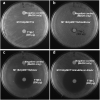Identification of Thiotetronic Acid Antibiotic Biosynthetic Pathways by Target-directed Genome Mining
- PMID: 26458099
- PMCID: PMC4758359
- DOI: 10.1021/acschembio.5b00658
Identification of Thiotetronic Acid Antibiotic Biosynthetic Pathways by Target-directed Genome Mining
Abstract
Recent genome sequencing efforts have led to the rapid accumulation of uncharacterized or "orphaned" secondary metabolic biosynthesis gene clusters (BGCs) in public databases. This increase in DNA-sequenced big data has given rise to significant challenges in the applied field of natural product genome mining, including (i) how to prioritize the characterization of orphan BGCs and (ii) how to rapidly connect genes to biosynthesized small molecules. Here, we show that by correlating putative antibiotic resistance genes that encode target-modified proteins with orphan BGCs, we predict the biological function of pathway specific small molecules before they have been revealed in a process we call target-directed genome mining. By querying the pan-genome of 86 Salinispora bacterial genomes for duplicated house-keeping genes colocalized with natural product BGCs, we prioritized an orphan polyketide synthase-nonribosomal peptide synthetase hybrid BGC (tlm) with a putative fatty acid synthase resistance gene. We employed a new synthetic double-stranded DNA-mediated cloning strategy based on transformation-associated recombination to efficiently capture tlm and the related ttm BGCs directly from genomic DNA and to heterologously express them in Streptomyces hosts. We show the production of a group of unusual thiotetronic acid natural products, including the well-known fatty acid synthase inhibitor thiolactomycin that was first described over 30 years ago, yet never at the genetic level in regards to biosynthesis and autoresistance. This finding not only validates the target-directed genome mining strategy for the discovery of antibiotic producing gene clusters without a priori knowledge of the molecule synthesized but also paves the way for the investigation of novel enzymology involved in thiotetronic acid natural product biosynthesis.
Figures




Similar articles
-
A Single Biosynthetic Gene Cluster Is Responsible for the Production of Bagremycin Antibiotics and Ferroverdin Iron Chelators.mBio. 2019 Aug 13;10(4):e01230-19. doi: 10.1128/mBio.01230-19. mBio. 2019. PMID: 31409675 Free PMC article.
-
Minimization of the Thiolactomycin Biosynthetic Pathway Reveals that the Cytochrome P450 Enzyme TlmF Is Required for Five-Membered Thiolactone Ring Formation.Chembiochem. 2017 Jun 19;18(12):1072-1076. doi: 10.1002/cbic.201700090. Epub 2017 May 11. Chembiochem. 2017. PMID: 28393452 Free PMC article.
-
Computational strategies for genome-based natural product discovery and engineering in fungi.Fungal Genet Biol. 2016 Apr;89:29-36. doi: 10.1016/j.fgb.2016.01.006. Epub 2016 Jan 13. Fungal Genet Biol. 2016. PMID: 26775250 Review.
-
Genome mining of biosynthetic and chemotherapeutic gene clusters in Streptomyces bacteria.Sci Rep. 2020 Feb 6;10(1):2003. doi: 10.1038/s41598-020-58904-9. Sci Rep. 2020. PMID: 32029878 Free PMC article.
-
Genome mining for drug discovery: progress at the front end.J Ind Microbiol Biotechnol. 2021 Dec 23;48(9-10):kuab044. doi: 10.1093/jimb/kuab044. J Ind Microbiol Biotechnol. 2021. PMID: 34279640 Free PMC article. Review.
Cited by
-
Biosynthesis of sulfonamide and sulfamate antibiotics in actinomycete.J Ind Microbiol Biotechnol. 2021 Jun 4;48(3-4):kuab001. doi: 10.1093/jimb/kuab001. J Ind Microbiol Biotechnol. 2021. PMID: 33928358 Free PMC article. Review.
-
Pass-back chain extension expands multimodular assembly line biosynthesis.Nat Chem Biol. 2020 Jan;16(1):42-49. doi: 10.1038/s41589-019-0385-4. Epub 2019 Oct 21. Nat Chem Biol. 2020. PMID: 31636431 Free PMC article.
-
Engineering Salinispora tropica for heterologous expression of natural product biosynthetic gene clusters.Appl Microbiol Biotechnol. 2018 Oct;102(19):8437-8446. doi: 10.1007/s00253-018-9283-z. Epub 2018 Aug 13. Appl Microbiol Biotechnol. 2018. PMID: 30105571 Free PMC article.
-
The impact and prospect of natural product discovery in agriculture: New technologies to explore the diversity of secondary metabolites in plants and microorganisms for applications in agriculture.EMBO Rep. 2018 Nov;19(11):e46824. doi: 10.15252/embr.201846824. Epub 2018 Oct 25. EMBO Rep. 2018. PMID: 30361392 Free PMC article.
-
mSphere of Influence: Synthetic Biology of Natural Product Biosynthesis.mSphere. 2020 Jan 8;5(1):e00954-19. doi: 10.1128/mSphere.00954-19. mSphere. 2020. PMID: 31915225 Free PMC article.
References
-
- Clardy J, Fischbach MA, Walsh CT. New antibiotics from bacterial natural products. Nat Biotechnol. 2006;24:1541–1550. - PubMed
-
- Demain AL. Antibiotics: natural products essential to human health. Med Res Rev. 2009;29:821–842. - PubMed
-
- Cooper MA, Shlaes D. Fix the antibiotics pipeline. Nature. 2011;472:32. - PubMed
-
- Corre C, Challis GL. New natural product biosynthetic chemistry discovered by genome mining. Nat Prod Rep. 2009;26:977–986. - PubMed
-
- Genilloud O. The re-emerging role of microbial natural products in antibiotic discovery. Antonie Van Leeuwenhoek. 2014;106:173–188. - PubMed
MeSH terms
Substances
Grants and funding
LinkOut - more resources
Full Text Sources
Other Literature Sources
Research Materials
Miscellaneous

